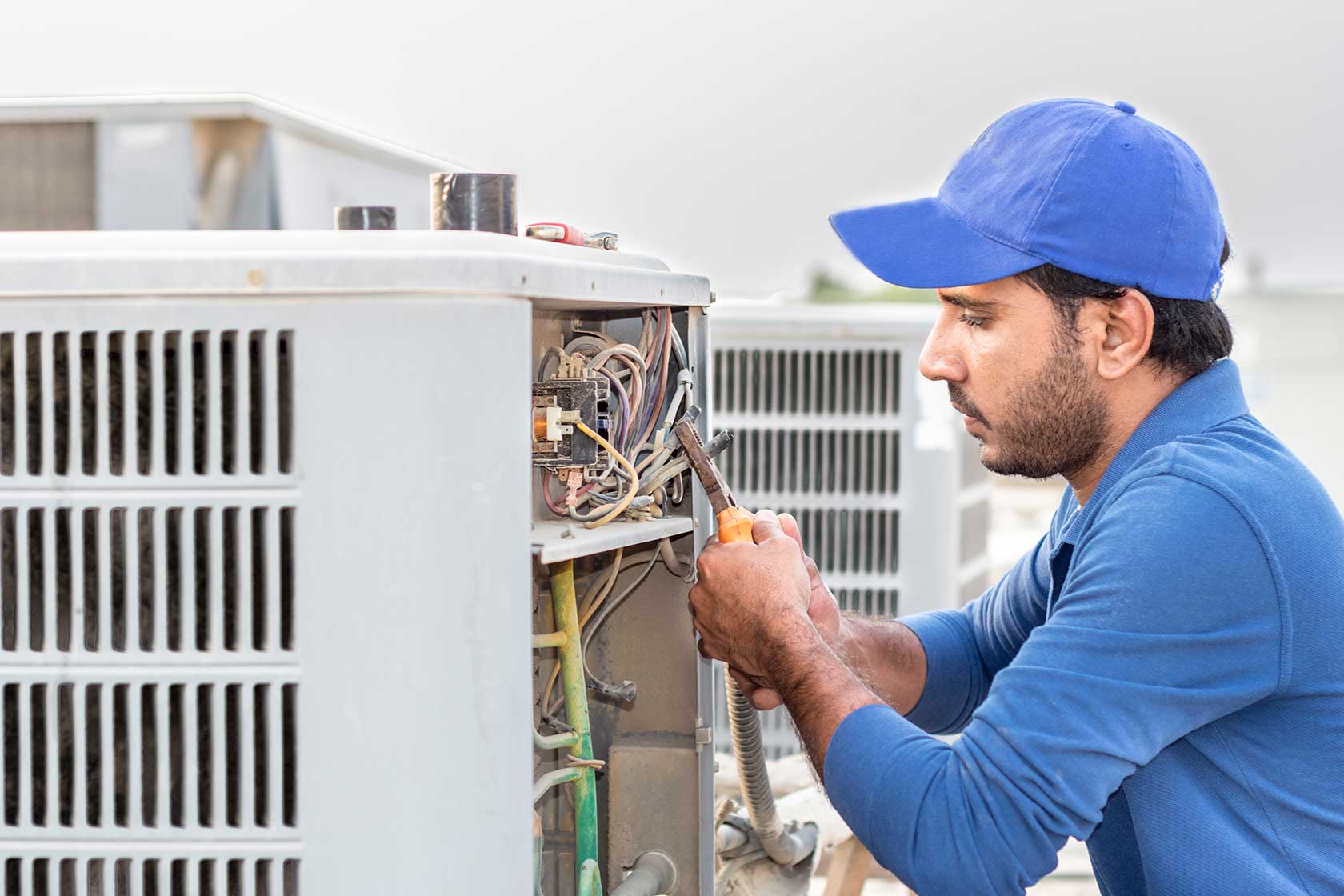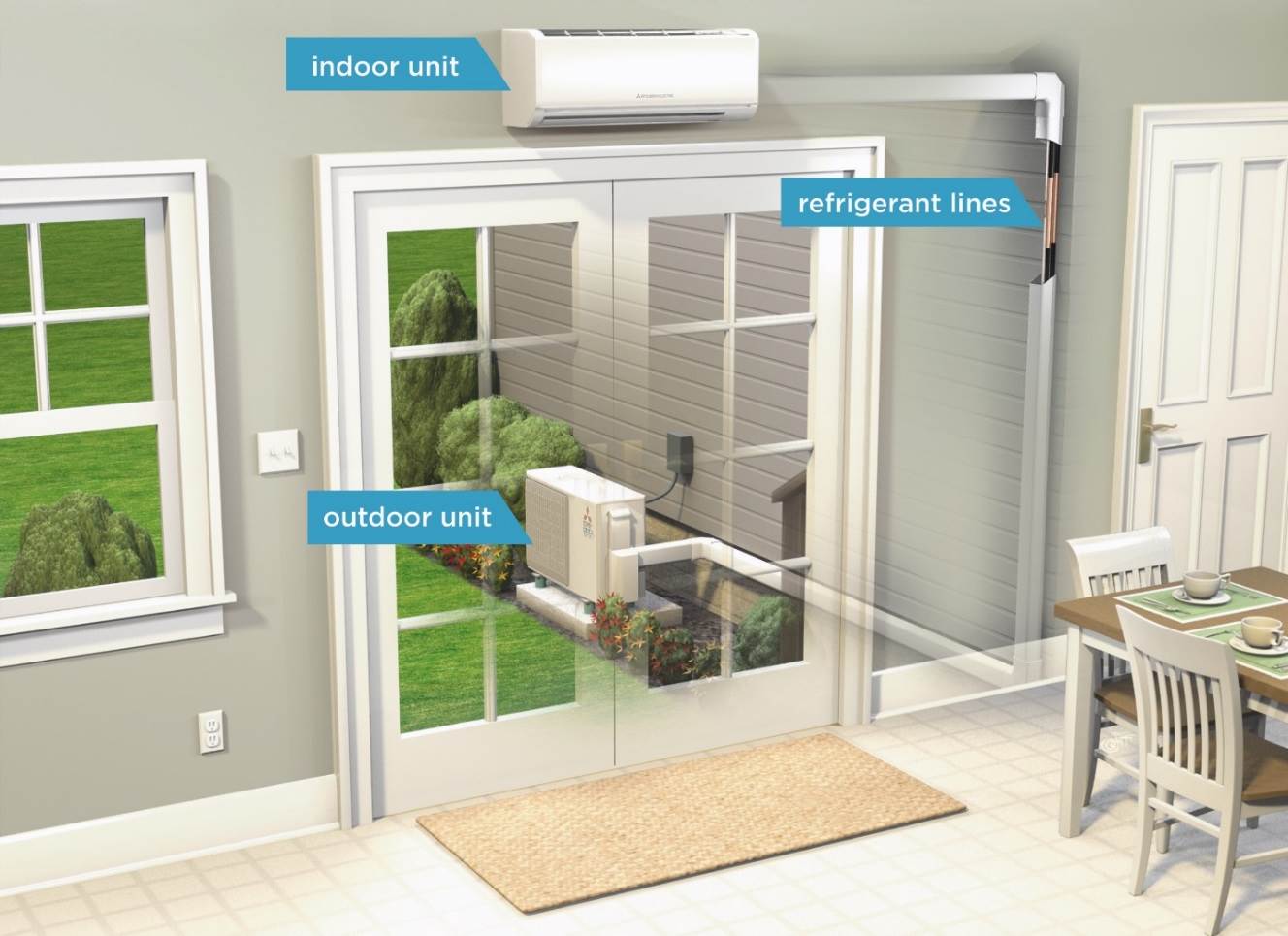When it comes to making architectural areas, the old claiming 'type complies with function' holds true. https://northfinchleyacinstallation.co.uk But have you ever took into consideration exactly how incorporating cooling into style can elevate convenience and performance at the same time?
The smooth combination of cooling systems within the structure of a building not just impacts the residents' wellness yet likewise influences the overall sustainability of the structure. As you check out the intricate relationship between style and air conditioning, a world of cutting-edge solutions and innovative innovations awaits your exploration.
Key Takeaways

- Energy-efficient systems enhance convenience and sustainability.
- Integrated a/c improves indoor air high quality.
- Balancing appearances and performance ensures ideal design.
- Future trends concentrate on wise, sustainable air conditioning remedies.
Significance of Integrated Cooling
When developing rooms, incorporating a/c is necessary for making certain the very best convenience and performance. Power efficiency plays a vital function in the design process, as it not only minimizes operational prices however likewise minimizes the ecological impact of the building. By integrating energy-efficient cooling systems, you can produce a lasting and economical service that profits both the residents and the earth.
Furthermore, interior air top quality is an additional crucial element to take into consideration when making with incorporated cooling. Correct air flow and filtering systems help keep a healthy and balanced interior atmosphere by decreasing contaminants and irritants. This results in enhanced occupant health and efficiency. When picking cooling systems, focus on those that supply advanced purification technologies to boost the overall indoor air quality.
Variables Affecting Design Decisions
Integrating air conditioning into building styles calls for mindful factor to consider of different factors that affect style choices. When integrating air conditioning systems, sustainability factors to consider are vital to lower the structure's ecological impact. Customer experience plays a considerable role in determining the efficiency and complete satisfaction with the cooling system.
- Energy Effectiveness: Sustainable style methods aim to decrease energy consumption, which not only profits the environment however additionally minimizes functional costs for the building proprietor.
- Indoor Air Quality: Offering a comfy and healthy and balanced indoor atmosphere boosts the general user experience, promoting productivity and health.
- Aesthetics and Integration: Integrating air conditioning systems perfectly into the architectural design makes sure that performance does not endanger the visual charm of the space, boosting user complete satisfaction and overall structure aesthetic appeals.
Effective Cooling Methods for Structures
To enhance cooling down efficiency in buildings, take into consideration integrating passive style approaches along with air conditioning systems. Passive cooling strategies can considerably minimize the requirement for mechanical air conditioning, resulting in even more sustainable services for keeping comfortable interior temperature levels. Style features such as shading gadgets, natural air flow systems, and thermal mass can assist regulate temperatures without counting exclusively on energy-intensive cooling. By tactically positioning home windows to make the most of cross air flow or using reflective roofing products to lower solar warm gain, you can harness the power of nature to cool your structure efficiently.
In addition to passive techniques, applying lasting options like eco-friendly roofing systems or living walls can better improve cooling down efficiency by offering insulation and lowering warmth absorption. These functions not just aid in keeping comfortable interior temperature levels but likewise contribute to a greener atmosphere. By incorporating easy cooling methods with sustainable solutions, you can create a much more energy-efficient and eco-friendly building style that prioritizes both convenience and conservation.
Balancing Aesthetic Appeals and Capability
Think about the harmonious assimilation of visual elements with practical aspects in your building layout to ensure a well balanced and impactful result. When including a/c systems right into your structure style, striking a balance in between looks and capability is key to developing rooms that not just look excellent however also offer perfect convenience for residents.
To accomplish this balance, keep the complying with points in mind:
- Blend the System with the Environments: Make sure that the cooling systems or vents effortlessly incorporate with the total aesthetic of the space, whether through concealed positioning, decorative covers, or matching shades.
- Focus On Individual Experience: Design the airflow and temperature level control systems in a way that focuses on the comfort and health of the passengers. Take into consideration aspects such as air circulation, noise degrees, and ease of use to enhance the total individual experience.

- Integrate Lasting Practices: Go with energy-efficient air conditioning remedies that not just add to the visual appeal of the building but likewise promote sustainability and lower environmental influence.
Future Patterns in Architectural Cooling
As you picture the future of building style, remaining abreast of arising air conditioning trends comes to be essential for boosting both form and feature within your jobs.
The integration of wise technologies into building air conditioning systems is set to revolutionize the method buildings are cooled. These systems utilize data and automation to maximize power use, supplying customized comfort while minimizing environmental impact.
Lasting solutions are additionally forming the future of architectural cooling. From passive style approaches that optimize natural air flow to cutting-edge cooling materials that decrease the demand for typical a/c, sustainability goes to the forefront of cooling technologies. Architects are increasingly incorporating green roof coverings, shielding elements, and thermal mass into their layouts to create even more energy-efficient air conditioning systems.
Frequently Asked Concerns
How Does A/c Influence the General Sustainability and Energy Performance of a Building Layout?
When you integrate cooling right into structure style, it impacts sustainability and energy performance. Energy usage can increase as a result of air conditioning usage, influencing structure efficiency. This raised energy demand can have unfavorable environmental impacts, minimizing total sustainability.
To minimize these impacts, take into consideration including energy-efficient a/c systems, appropriate insulation, and passive air conditioning strategies. Balancing comfort with power performance is necessary for creating lasting building designs.
Exist Any Laws or Certifications That Architects Need to Think About When Integrating Air Conditioning Into Their Styles?
When incorporating cooling right into your designs, it's essential to take into account regulatory demands like building regulations and qualification requirements for energy performance. Fulfilling these guidelines guarantees that your task straightens with industry finest techniques and environmental objectives.
Acquainting on your own with these policies will certainly assist you in developing lasting layouts that prioritize comfort while additionally minimizing power intake. Keep educated and certified to provide jobs that are both comfortable and eco-friendly.
Can the Placement of A/c Units Impact the General Convenience and Functionality of a Room?
When it concerns cooling units, placement matters a great deal for your room's comfort and functionality. Air circulation is crucial, so stay clear of obstructing vents or putting systems in dilemmas.
Think about how sound pollution can impact your environment and aim for a visually pleasing configuration that blends flawlessly with your spatial design.
Pay attention to where you place these units to assure maximum convenience and performance throughout your space.
What Are Some Innovative Technologies or Materials That Can Be Utilized to Boost A/c Systems in Modern Design?
To improve air conditioning systems in modern style, you can check out smart controls and sustainable products. Passive cooling methods and utilizing thermal mass are innovative methods to enhance effectiveness and convenience.
How Can Architects Ensure That the Style of Air Conditioning Systems Matches the Total Visual of a Structure While Still Prioritizing Functionality and Comfort?
To guarantee the layout of air conditioning systems complements a structure's aesthetic, prioritize visual combination and style harmony. Include energy-efficient technologies for performance. Stabilizing looks and performance boosts resident comfort.
Stress smooth combination of air conditioning components right into the architectural style. By concentrating on both aesthetic appeals and energy performance, engineers can develop a space that's aesthetically attractive, comfy, and eco-friendly.
Final thought
Generally, when creating with comfort in mind, integrating cooling in style is vital. By considering variables such as efficient cooling strategies, stabilizing aesthetic appeals and functionality, and staying in advance of future trends, architects can create rooms that aren't just aesthetically appealing but additionally comfy for occupants.
It is very important to prioritize the well-being and convenience of those that'll be using the area, and integrated cooling plays an essential function in achieving this goal.
